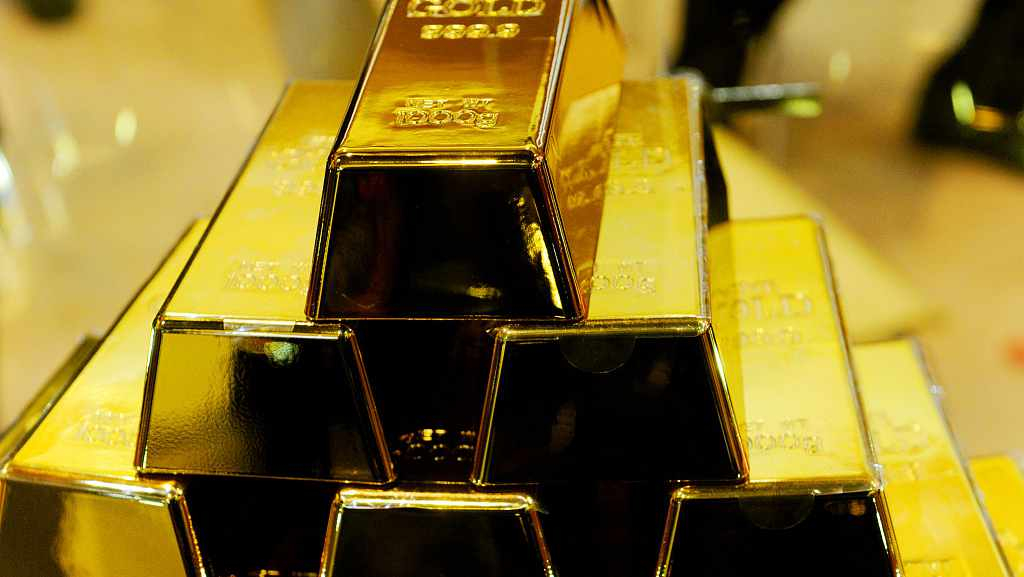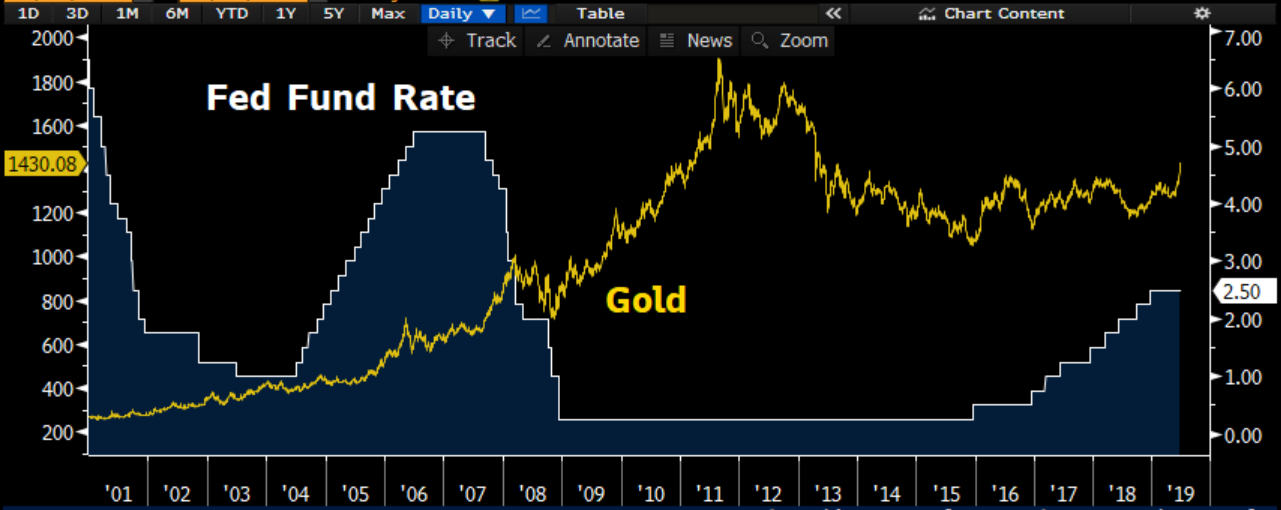

VCG Photo
Editor's Note: Jimmy Zhu is a chief strategist at Fullerton Research. The article reflects the author's opinion, and not necessarily the views of CGTN.
In the past, stocks and bonds didn't benefit throughout the entire Fed's easing cycle because the policy stimulus itself would change the macroeconomic condition and then affect the securities' value. However, gold is seen to be the biggest winner in every Fed's easing cycle.
Gold is considered a safe-haven asset most of the time, but it rose together with the U.S. stocks in the past weeks. Since the beginning of June, the correlation between the Dow Jones index and gold stands above 0.7 percent. If such a trend between the two continues to hold, changes in gold prices won't serve as a reliable indicator in gauging the sentiment in safe-haven assets. However on the other hand, gold prices have started moving in an opposite direction with the U.S. short-end Treasuries' yield.

Source: Bloomberg
Negative correlation between gold and U.S. 2-year stands above 0.8 so far this month, and there is a similarly negative correlation between gold and U.S. 3-month government bond yield as well. The short-end rates are extremely sensitive to the Fed's interest rates. In other words, gold has now become another major alternative to gauge the Fed's rate path outlook. The U.S. 3-month government bond yield dropped 22 bps so far this month, heading towards the greatest decline since November 2008.
After most of the major U.S. economic data missed the estimates in past weeks, the Fed's rate cut in the near future is widely expected. As of June 25, interest rate markets have priced in a 100-percent rate cut possibility at the next FOMC meeting in July, and the possibility of a cut by 50 bps stands at 38 percent.
Gold has gained over nine percent since early June after the rising expectations on the Fed to cut rates in the near term. If historical price actions are a reliable indicator, room for gold to further rally largely remains at this stage. Data shows that Fed's rate cut cycle in the past three rounds lasted about 12 months in each one, and gold gained an average 8.6 percent for each cycle and extended the rally by another 23 percent in the next 12 months.
– When the Fed cut interest rates throughout 2001, gold gained by 2.5 percent in this period and extended the rally by another 24 percent in the subsequent 12 months;
– When the Fed cut the benchmark rates from the end of 2002 to the middle of 2003, gold gained by 8.9 percent in this period and extended the rally by another 16 percent in the subsequent 12 months;
– The Fed cut interest rates again from late 2007 to the end of 2008 amid the global financial crisis, and gold prices surged by almost 12 percent in this period and gained by as much as 69 percent in QE1 and 56 percent in QE2 period.
When central banks release the liquidity, prices from stocksM, bonds to commodities gain broadly. Still, there are other fundamentals that drive these assets besides the liquidity condition, such as growth, and fiscal policies. For example, stocks may under perform when the fresh easing measures are yet to transmit into the real economy, and bonds may sell off later after stimulus boosts the growth and inflation outlook. Special commodities like gold or even bitcoin, their prices' moves don't really connect with any of the visible economic fundamentals. Hence, herd behaviors are easily observed in these two assets when the inflows increase.

Source: Bloomberg
On the other hand, Fed's monetary easing tends to accelerate the inflation growth, while rising inflation in the U.S. is expected to depreciate the value of the U.S. dollar. As such, the value of gold, which is denominated in the U.S. dollar, will become more expensive. Thus, buying gold is another hedging tool to prevent the investors’ cash value from shrinking due to the Fed's policy easing.

Copyright © 2018 CGTN. Beijing ICP prepared NO.16065310-3
Copyright © 2018 CGTN. Beijing ICP prepared NO.16065310-3